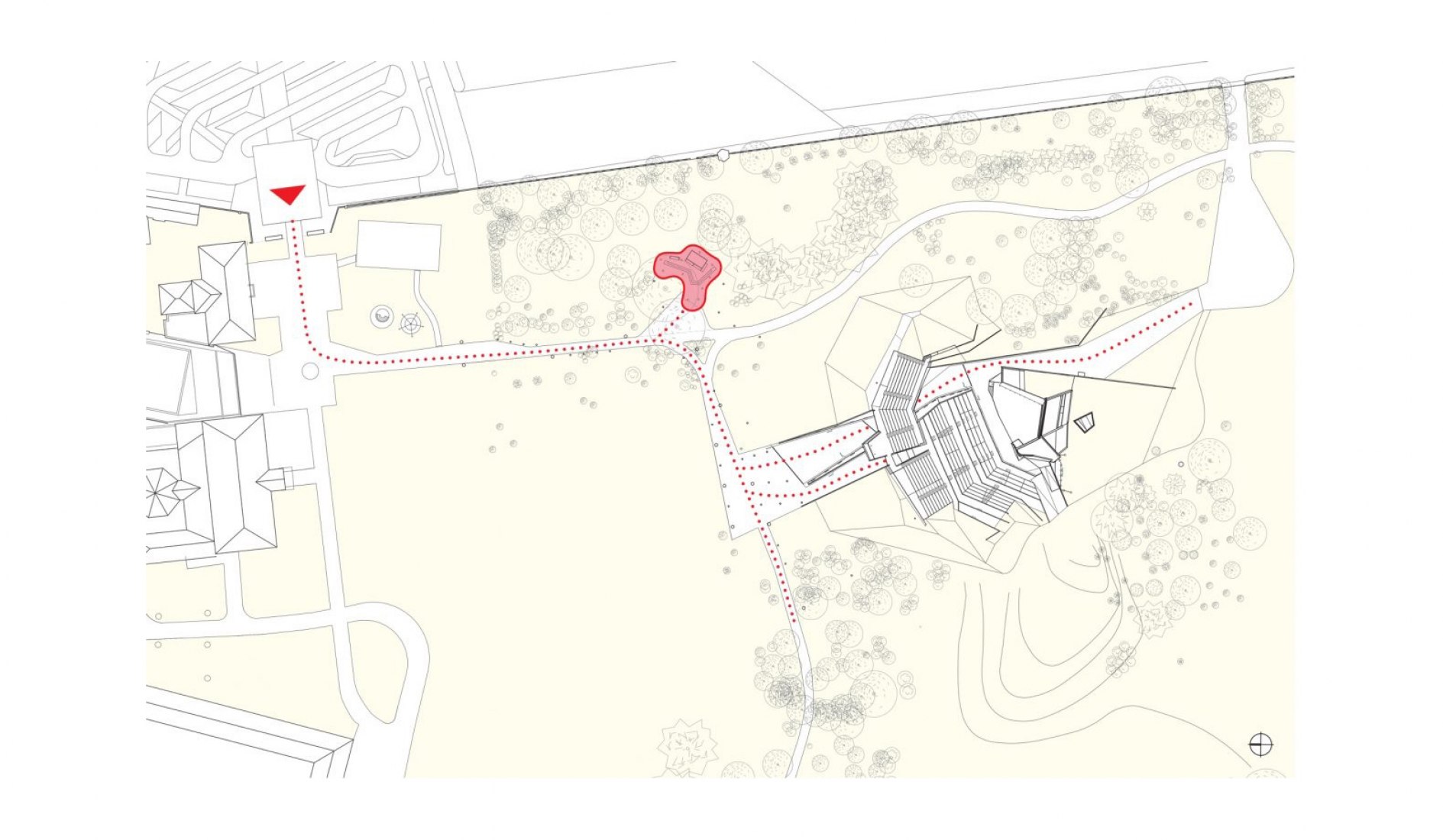“The open-air pavilion “Wolke 7” in the grounds of Grafenegg Castle blends sensitively into the historic park landscape thanks to its floating roof, which sits like a leaf between the trees. The three-dimensional, in-situ concrete slab forms its own atmospheric space with an agreeable lightness and marks the special use of the public space. The jury was particularly impressed by the poetic and clear conception of the building, the reduced construction and range of materials and the refinement and high quality of the execution”. Jury -Statement on the AIT Award.
Description of project by The next ENTERprise Architects
“Wolke 7”, a place for culinary highlights and coming together in an open-air atmosphere, adds a new dimension to the synergy between the traditional and the contemporary in Grafenegg which reaches far beyond the catering infrastructure.
SYMBIOSIS BETWEEN ART AND NATURE
With a roof that is supported by delicate steel columns and nestles between the trees like a leaf, “Wolke 7” slips effortlessly into the historic parkland of Grafenegg’s castle grounds. The floor of the pavilion is created by the widening of the footpath to form a public space; the interaction between the hard ceiling and the soft ground awakens the feeling that one is entering a room.
The roof of “Wolke 7” is defined by its in-situ concrete surface, which gently rises and falls twice as it translates its natural curvature into a structural principle. Derived from the position of the existing trees this sweeping form of the roof has an additional spatial quality and enables the catering pavilion to open in every direction while drawing attention to the bar as a place where one can linger, protected from the elements.
This double curvature of the in-situ concrete surface was digitally generated via a simulation using silk stretched between supports. The resulting deformation raises the natural shape of the curve to a structural principle. The reduction of the bending stress coupled with the activation of the tension in the membrane creates an economic concrete solution and makes it possible to execute a roof structure of optimal stiffness which requires no waterproofing.
With a length of over 20 metres the counter of the pavilion consists of prefabricated concrete elements with integrated stainless steel cooling drawers and is used both for serving food and drink and as a stand-up bar for visitors to the park. It is complemented by the storage box with serving niches and the plain, sheet aluminium glasses cabinet – a spatial ensemble that is oriented in every direction, free of any sense of front or back.
However, as well as inviting concertgoers to take some refreshment during intervals, the pavilion is also a contemporary architectural object which has become a fixed component of both the Grafenegg Castle Garden and its symbiosis between art and nature. The resulting interplay between clumps of trees, open areas of grass and the design of the roof invites visitors to enjoy unfamiliar glimpses of the surrounding park and the Wolkenturm.






























